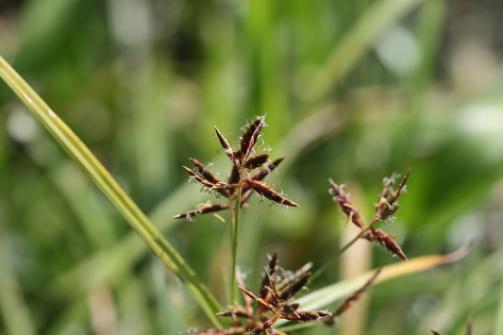Purple Nutsedge (Cyperus Rotundas)

Cyperaceae (Sedge family)
Group: Monocot (Sedge)
Perennial sedge with tubers and underground runners, native of Eurasia. It is commonly found in cultivated fields, disturbed areas, pastures, and lawns. Seedlings are inconspicuous and are often rare to find.
Leaves are linear, flat to slightly corrugated, formed in groups of three (three-ranked), mostly basal, dark green, 1/16 to 1/4-inch wide and 6 to 12 inches long. Leaves have a prominent midvein and tips abruptly taper to a sharp point, often described as “boat shaped”.
Stem is triangular in cross section, smooth, solitary, 4 inches to 1 1/2 feet tall, and longer than basal leaves.

Flowers or seed heads are reddish purple to reddish brown spikelets at the end of the stem, 1-1/4 to 3-3/4 inches long and 1 1/2 to 2 3/4-inches wide. Seed heads have 2 to 4 inconspicuous leaves below. Seed heads have several unequal stalks each bearing 3 to 9 thin spikes, spreading or ascending. Seed is grayish, less than 1/16-inch long, and three-angled. Tubers are rough, irregularly shaped, connected in chains and bitter to taste.
Roots are fibrous, from tubers and rhizomes.
Propagation is primarily by tubers and runners, but occasionally by seed.
